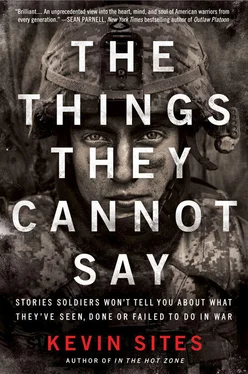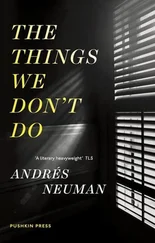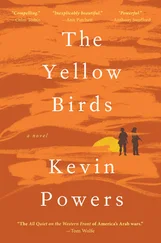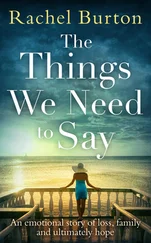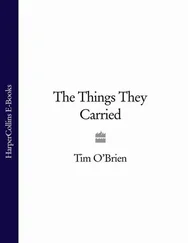When another lieutenant in Saal’s company was killed, his men sobbed because they loved him so much, explains Saal. He took over the dead lieutenant’s platoon that same night. Over time, he says, the platoon became his own and the unit came together under his leadership. They spent their days thrashing through the jungle looking for their Vietcong and North Vietnamese enemies and their nights buttoned up in their makeshift camps, waiting for them. Once, while on a long-range patrol, they saw a man running across a rice paddy.
“Go ahead, shoot him,” Saal said to his men. With three shots his Marines brought the man down. They retrieved the body and, after going through his clothes and belongings, discovered he was a North Vietnamese Army officer. They also found photographs of his wife and children.
“It made me realize we had killed a human being,” says Saal.
That realization was not in step with the wartime necessity of dehumanizing the enemy, enabling soldiers to kill in battle without paralyzing regret. To the American soldiers and Marines, the Vietnamese were “slopes” or “gooks,” names seeming to denote something more animal than human. [22] The use of the derogatory term “gook” dates back to U.S. Marines fighting in the Philippines from 1899 to 1902. It was widely used by American service members during the wars in Korea and Vietnam.
Lieutenant Colonel Dave Grossman addressed that phenomenon in his book On Killing: The Psychological Cost of Learning to Kill in War and Society . He wrote, “It’s so much easier to kill someone if they look distinctly different from you. If your propaganda machine can convince your soldiers that their opponents are not really humans but are ‘inferior forms of life,’ then their natural resistance to killing their own species will be reduced. Often the enemy’s humanity is denied by referring to him as a Gook, Kraut or Nip.”
Killing an enemy in this context was not taking life, but rather stopping a threat, which might save the lives of your brothers in arms. And since the dead enemy wasn’t human to those who bought into this belief system, then their bodies could be considered trophies of the kill just like hunted animals, as Saal would soon discover.
“I felt terrible [after the shooting], so I took a short power nap and woke up to see what my men had done to his body. It was fucked,” says Saal. What they did to their dead enemy became an image that Saal could never shake for all his days and nights thereafter.
“They got bamboo that was lying around, made a cross and… they fucking crucified him. My men crucified the soldier after they stripped him naked. That was my platoon under which I thought I had control.”
“Take him down! Take him the fuck down,” Saal remembers shouting at them.
“Come on, Lieutenant. They’d do the same thing to us if the situation were reversed,” one responded.
“I don’t give a good goddamn fuck! We are not them!”
This body hanging from the cross was not just his enemy, not just a “gook” or dangerous animal. He was a human being, a North Vietnamese officer with a wife and child, just doing his job as they were doing. The pictures Saal found on him made that clear. And this triumphalist crucifixion had seemed to strip away his and his men’s humanity, not that of this dead soldier, as it was intended. Saal says he felt a profound emptiness, as if he had lost a part of himself forever.
“I knew that’s where I left my soul… I lost my humanity. I saw it fly over my head. I’m sure there’s a lot of souls like mine, flying over the Iwo Jimas and the Gettysburgs.” It was a moment in war that Dr. Jonathan Shay characterized in Achilles in Vietnam as life-altering bad luck: “Battle creates inexplicable events that soldiers experience as luck,” wrote Shay. “These run from astounding good luck to crushing bad luck that taints the very soul.”
Saal walked away and sat on the edge of a clearing of elephant grass. As he hung his head, his radioman snapped a picture of him. He says when he saw the photo years later he knew exactly when the moment was. It inspired him to write a poem with these lines:
Later, depressed, angry, isolated and staring blankly
over the brown, dry and desolate rice paddy
where I had ordered the kill,
I watched my soul, a never regained part of me,
fly with wings, not those of an angel,
but as a dark and sad object,
wondering how this could ever have happened.
Saal explains the actions of his men in this way: “They had been there that entire fall, the war escalated to its peak. A lot of those guys had been through some heavy fighting and after their lieutenant was killed—they had motive for revenge. They were chomping at the bit to kill… and to get a body was a rarity. That was a high point for us to bring in the body. He had been NVA [North Vietnamese Army] officer which made us look good.”
Saal’s platoon command was marked by moments of moral betrayal where an enemy could be crucified and friends turned into enemies. It was the kind of bad luck, so easily roused in war, that did indeed taint the soul. Part of his journey back from the trauma of his wartime experience has included writing poetry to provide context and narrative to what was formerly just memory. He e-mails me a poem that he says was the most difficult one for him to write. This is an excerpt:
I remember seeing you with your long, black hair as if it were yesterday.
You were standing there waiting for me the next morning.
Waiting for me to enter what was left of your village.
We had split up, paired up, my men and I, and we had made friends with your friends.
Had eaten with you the afternoon before, eaten the food you had offered.
Shared with you, laughed and joked with you.
Good times, happy times during a war where there was little or no trust.
During a war where there were no friends, only enemies.
And then at dusk, we left and prepared an ambush close by your village.
It was rumored enemy soldiers were using it as a staging area for night patrols.
And the rumor proved true.
At midnight, a patrol came through and tripped our ambush.
A firefight ensued, the enemy retreated into your village and I did as I was so well-trained to do.
I called for an artillery strike, not once, not twice, but three times,
until the shelling stopped and all was quiet again.
Just the smoke and the dust filled the air and the only sounds were those of the jungle night.
At daybreak we swept through to see the results
and there you were, there you were, staring at me, preventing me from passing.
Standing in front of me with riveting eyes which penetrated my heart to the very depths of my soul.
I pretended you weren’t there with those glaring eyes that I have seen time after time in my dreams,
Night sweats that I have had over and over, so often that I’ve lost count,
Night howls that haunt me as do murdered ghosts seeking vengeance.
During his tour, Saal saw some of the most savage fighting of the war, including the January 1968 Tet Offensive, in which eighty thousand North Vietnamese and Vietcong troops staged a coordinated wave of attacks against a hundred cities. Saal himself became a casualty of that fighting, which ended his duty in Vietnam.
One of his friends, another lieutenant named Jack, had been killed the day prior, after stepping on a land mine.
“After Jack died on the twenty-eighth [of February] I didn’t care,” says Saal. “I was taking some real serious risks. I would walk on point or check places by myself with just my forty-five. We were being watched the entire time.”
Читать дальше
